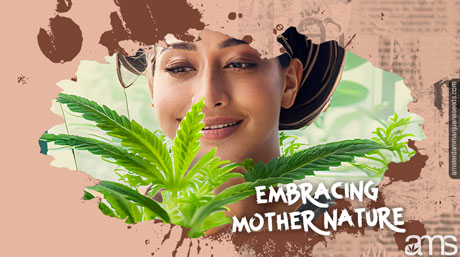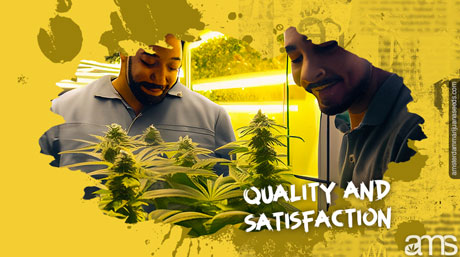General topics
How not to cough when smoking
Published
7 months agoon
By
admin
It’s happening again — you’re coughing so hard from a hit that you can no longer breathe. Nothing makes you feel like a newbie more, even for the veteran smokers out there. As you choke back tears, you wonder: is there a way to avoid coughing while smoking? And to that, we happily say: yes, there sure is.
It’s completely possible to avoid coughing when smoking. We all know the dreaded cough involved in some good bud. Some users even claim that it gets them higher. But does that belief hold true?
In this guide today, we want to explain why smoking weed causes a cough and how to avoid coughing when smoking.
What happens when you inhale pot? It’s time to get down to the details. We’ll even answer some of the most frequently asked questions about the topic at the end. Let’s dive in.

Why does smoking weed cause coughing?
First, a question you may be wondering: why does smoking weed cause coughing in the first place? What triggers us to cough, sometimes every time we smoke pot?
We get into the science side for the answer.
The sensory nerves in our airways produce a cough reflex when we inhale cannabis smoke a certain way. Essentially, it’s the body’s way of protecting itself against irritating substances.

Coughing while smoking is a perfectly normal, natural response that occurs when we inhale any kind of smoke. If you don’t cough while you smoke, you may just not be triggering the nerves in your airways.
Researchers are still learning how cannabis affects the lungs through smoke, and so are we. In the meantime, we know that smoker’s cough is because of our body’s natural immune response to smoke.
Fortunately, there are ways to minimize or altogether avoid coughing while smoking. Likewise, a 2013 research study from UCLA shows coughing from smoking weed is a short-term issue. There’s little to no lasting health impact to coughing from smoking weed. Still, some users might not want to do it!

How to avoid coughing when smoking
1. Take smaller (but deeper) hits
Take it easy when you smoke. There’s no need to chief a bowl. Instead, take smaller, gentler hits. The gentler of a hit you take, the less likely you are to cough.
Some users opt to corner their bowls and light carefully around to ensure an even distribution of smoke.
Likewise, cornering a bowl helps you take those smaller, safer hits to keep from coughing.

2. Don’t hold in your hits
On that same note, don’t hold in your hits when you smoke. No, really — the age-old tried-and-true method of holding in your hits is a myth. There’s actually little evidence that pot is a function of breath-hold duration.
In layman’s terms, there’s no evidence that you get higher by holding in your hits. If anything, it just increases the chances that you’re damaging your lungs from the smoke.
You can do without it and still have a finely stoned time; just try it out! Inhale the smoke, then exhale after that big inhale. You won’t regret making the switch if you’re one to currently hold in your hits.

3. Add a filter
You can add a filter to any smoking piece — even a joint or blunt. There are glass tip filters that help make hits smoother. As a bonus, the hits often taste better, too. There’s a lot to love about glass filters.
If you’re smoking out of a bowl, such as with a pipe or bong, we recommend staying away from metal filters.
Glass filters work better for flavor and smoother hits. If the goal is to avoid coughing, stick with glass filters no matter the piece. Plus, they’re reusable. When it’s time to clean your piece, stick the glass filters in the cleaning bag, too. They’ll be good to go for the next session.

4. Smoke a smoother strain
Plain and simple, there are some strains that will feel smoother than others. Ideally, you want to choose a strain that will go down the lungs smoothly, offering a cleaner and simpler hit. These hits are much less likely to make you cough.
But what strains are the smoothest? We did our research and compiled a list for you.
Green Crack
A name you may be familiar with, Green Crack is a Sativa-dominant that’s perfectly smooth. In fact, it’s often recommended for beginners because of how easy it is to smoke.
Blue Dream
Another famous name, Blue Dream is well-known for how smoothly it is going down. Innovative, our Blue Dream XTRM takes it up a notch without sacrificing any smoothness.
Ice Cream Cake
Gentle and sweet, Ice Cream Cake rolls down the throat easily. This strain is a beautiful blend of the infamous Wedding Cake and beloved Gelato. The results are something that you’ll remember when it’s time for the next grow project.
OG Kush
Finally, OG Kush comes in to finish up the list. As a legendary strain, it comes as no surprise that many users agree it’s one of the smoothest. Enjoy the superb taste, aroma, and experience that comes with growing such a famously delicious strain.
Does coughing get you higher?
There are many tall tales across the cannabis industry when it comes to coughing. Some users believe that holding in your cough will get you higher. Others believe the harder you cough, the higher you become. And still, others think that holding in the smoke to prevent coughing will do the trick.
All of these are misconceptions because of the science behind coughing. As we mentioned earlier, the sensory nerves in our airways are what cause us to cough. This is a perfectly normal, natural response to something foreign entering our lungs. It’s not causing you to get higher just because you cough in the middle of it.

What happens when you inhale pot?
When we’re smoking weed, THC, cannabinoids, and other cannabis compounds hit our endocannabinoid system throughout our body. When THC attaches to the CB1 receptors in our brains, we feel high.
That’s how our body processes cannabinoids and other foreign compounds. Cannabis molecules coincidentally mimic the endocannabinoid system’s own endocannabinoids, allowing cannabinoids to attach to the receptors.
In simpler terms, when we inhale pot, the THC hits our brains. That’s how we get high! It’s also how we experience the other benefits of weed. Pain relief, relaxation, and much more are known benefits of pot.

Final thoughts
As you can see, you have a lot of options when it comes to preventing that dreaded cough. If coughing isn’t your thing, we hope you can use these tips and tricks to your advantage. In addition, we hope our strain recommendations are exactly what you were needing.
Frequently asked questions
Does smoker’s cough go away?
Smoker’s cough can go away, but it also might not. The perpetual cough can last anywhere from a few days to a few weeks, to indefinitely for some users. It depends on how heavily and frequently you smoke weed. Likewise, it depends on if you smoke cigarettes along with weed to help determine if your cough will go away.
Is it normal to cough a lot when you smoke?
Absolutely. Some users are unfamiliar with the harshness that comes from smoking. Other users may be using a particularly strong strain that hits like a freight train. And still, other users may just be susceptible to coughing.
No matter the reason, it’s perfectly normal to cough a lot when you smoke. However, it doesn’t hurt to consult with a medical health professional if you have a perpetual cough that won’t go away after a few weeks. Preventative health is always the go-to.
You may like
-


Pot prohibition costs Florida at least $200 million per year
-


Union’s initiative to organize Oregon marijuana workers nears ballot
-


Cannabis and Mental Health: Recent Research and Implications
-


Why You Shouldn’t Vote for Kamala Harris Just Because of Her Position on Cannabis- Banana in the Tailpipe, Again?
-


Your Trusted Amsterdam Seed Bank – Powered by Mother Nature, Breeding since 1996
-


Sam Hilliard’s clutch homer, Ezequiel Tovar’s walk-off send Rockies to win over Red Sox in 12 innings
General topics
Your Trusted Amsterdam Seed Bank – Powered by Mother Nature, Breeding since 1996
Published
2 days agoon
July 24, 2024By
admin
Hey there, fellow cannabis enthusiasts! Welcome to AMS, your go-to destination for top-quality seeds straight from the heart of Amsterdam. As proud owners of a reputable seed bank, we’ve been spreading seed happiness since 1996, bringing joy to growers and cultivators worldwide. Powered by Mother Nature herself, we’re here to share our expertise, passion, and love for all things cannabis. Join us on this journey as we explore the wonders of seed breeding and the incredible world of marijuana cultivation.
Our Story
Picture this: Amsterdam, a city bursting with vibrant energy, rich culture, and a strong love for cannabis. It’s within this backdrop that AMS was born, rooted in the spirit of exploration and the desire to create extraordinary strains. As a lifelong grower and seed breeder, I’ve dedicated my life to perfecting the art of cannabis cultivation. From my early days experimenting with different genetics to establishing AMS as a trusted seed bank, my journey has been one of passion and dedication. Now, I invite you to join our community and experience the fruits of our labor.

Embracing Mother Nature
At AMS, we believe in the power of Mother Nature and its incredible ability to nurture and inspire. Our seeds are carefully selected and bred to harness the natural beauty and potential of cannabis plants. We work tirelessly to ensure our seeds embody the characteristics you seek – from robust growth to stunning aromas and potent effects. With each seed, we strive to honor the wisdom of nature and provide you with the tools to cultivate your own green paradise. Embrace Mother Nature’s magic and unlock the full potential of cannabis cultivation.

Extensive Seed Selection
Here at AMS, we take pride in our extensive selection of premium seeds, catering to every grower’s unique tastes and preferences. Whether you’re a seasoned connoisseur or a budding enthusiast, our diverse catalog offers something for everyone. Indulge in classics like White Widow and Northern Lights, or explore new frontiers with our exclusive strains. With over 1500 varieties to choose from, the possibilities are endless, and your cannabis journey awaits. Let us be your trusted partner in cultivating extraordinary cannabis experiences.
Quality and Satisfaction
Quality is our utmost priority at AMS. Each seed is meticulously handpicked and rigorously tested to meet our strict standards. With superior genetics and robust germination rates, we ensure excellence in every seed. We take pride in delivering the highest quality seeds, providing you with peace of mind and confidence in your cultivation journey. Trust AMS for a rewarding growing experience filled with top-quality seeds and unmatched expertise. Choose AMS and unlock the secrets to successful cannabis cultivation. Satisfaction guaranteed.

Growing Resources and Support
Whether you’re a beginner taking your first steps into the world of cannabis cultivation or a seasoned grower seeking new insights, AMS is your trusted partner. Our website is a goldmine of growing resources, packed with expert tips, step-by-step guides, and valuable insights to help you achieve bountiful harvests. From seedling care and nutrient management to advanced techniques like pruning and training, our comprehensive knowledge base is your ally in mastering the art of cultivation. Need personalized guidance or have specific questions? Our passionate team of experienced growers is just a click away, ready to provide tailored advice and share their wisdom. At AMS, we’re committed to your success and satisfaction, ensuring that you have the knowledge and support you need to grow with confidence.

Worldwide Shipping and Discreet Packaging
We understand that privacy is paramount when it comes to purchasing and receiving your seeds. That’s why we go above and beyond to provide discreet packaging and worldwide shipping, ensuring that your seeds arrive safely and securely at your doorstep. With our careful attention to detail, you can have peace of mind knowing that no prying eyes or curious neighbors will have any inkling of your cultivation endeavors. Your secret garden remains just that – a personal sanctuary where you can nurture and grow your plants with unwavering assurance and peace of mind.

At AMS, we’re more than just a seed bank – we’re a community of passionate growers, breeders, and cannabis enthusiasts.
Join us on this exhilarating journey as we delve into the limitless potential that resides within every seed. Together, let’s revel in the enchanting allure of cannabis, embrace the awe-inspiring wonders of nature, and nurture a realm brimming with joy, unity, and the most remarkable buds imaginable. Step into a realm where dreams take root, where passion and creativity intertwine, and where the possibilities are as vast and vibrant as the colors of a sunset sky. With each seed sown, we sow the seeds of transformation, sowing a tapestry of happiness, serenity, and unparalleled botanical brilliance. Let us embark on this odyssey together, cultivating a world where the power of Mother Nature and the allure of cannabis intertwine harmoniously, creating a symphony of aromas, flavors, and sensations that will transport you to new dimensions of bliss. Together, let’s sow the seeds of happiness, watch them flourish, and revel in the awe-inspiring beauty of our shared journey.
So, fellow cannabis aficionados, are you ready to embark on your seed-breeding journey with AMS? Let’s sow the seeds of joy, creativity, and endless possibilities. Come explore our collection, make your selection, and let the Amsterdam Seed Bank be your trusted companion on this green adventure!
Frequently Asked Questions
What makes AMS seeds unique and of high quality?
At AMS, we take pride in our meticulous seed selection process. Each seed is handpicked and undergoes rigorous testing to meet our strict standards. Our focus on superior genetics and robust germination rates ensures that every seed embodies the excellence you seek. Trust AMS for top-quality seeds that guarantee a rewarding cultivation journey.
How extensive is the seed selection at AMS?
Our seed catalog at AMS is diverse, offering over 1500 varieties to cater to the unique tastes and preferences of all growers. Whether you’re an experienced connoisseur or a beginner, we have something for everyone. Explore classic strains like White Widow and Northern Lights, or venture into exclusive varieties. Your cannabis journey awaits with endless possibilities.
Does AMS provide support and resources for cannabis cultivation?
Absolutely! At AMS, we are committed to your success and satisfaction. Our website is a valuable resource packed with expert tips, step-by-step guides, and comprehensive knowledge to help you achieve bountiful harvests. From beginner basics to advanced techniques, our extensive knowledge base is your ally in mastering the art of cultivation. Additionally, our passionate team of experienced growers is ready to provide personalized guidance and answer any questions you may have. Grow with confidence with AMS by your side.
General topics
Amsterdam seed Banks Dominance in Cannabis Genetics and Seed Quality
Published
3 weeks agoon
July 2, 2024By
admin
A Deeper Understanding of Amsterdam seed banks phenomenon: Amsterdam’s Mastery of Cannabis Genetics and Seed Quality.
From the water-bound streets of its picturesque canals to the bustling hub of its coffee shops, Amsterdam has long been recognized as a landmark city in the cannabis world. Known for its expansive cannabis seed banks and renowned marijuana seed providers, Amsterdam’s contribution to cannabis genetics has been pivotal, creating a standard that sets the bar globally. So, why and how has this European city, in particular, gained such dominance and mastery in the world of cannabis genetics?
The first crucial factor to consider is Amsterdam’s progressive legislative environment. Long before cannabis acceptance began to ripple across the world, Amsterdam was one of the few places where cannabis seeds and marijuana growing were treated with a largely tolerant approach. The city’s laws permitted possession and personal use of small quantities of marijuana, enabling an entire industry to flourish around cannabis growing. It’s this lenient approach that first provided Amsterdam with the opportunity to establish itself as a marijuana capital.

The nurturing of an open cannabis culture not only fostered a domestic market but also made Amsterdam a hotspot for international cannabis enthusiasts. This global recognition led to a thriving tourism industry centered around cannabis. People from all over the world visited Amsterdam for its famed marijuana seeds, many bringing these seeds back home, which in turn, furthered Amsterdam’s reputation as a cannabis growing hub.
This environment also led to an influx of experts in the field. Biologists, geneticists, and botanists flocked to the city, eager to explore the potential of cannabis growing in a region where it was not only accepted but celebrated. The scientific community’s involvement played a key role in transforming the quality of cannabis seeds and marijuana seeds available in Amsterdam.
Investments in research and development allowed Amsterdam to stay at the forefront of cannabis genetics. The city’s specialists were some of the first to delve into the science of cannabis, understanding the crucial role genetics played in the quality of the final product. It was through their efforts that Amsterdam became a pioneer in developing stable, high-quality cannabis seeds.
By meticulously selecting and breeding cannabis plants with desirable traits, these experts were able to create superior strains of marijuana. This includes varieties that are easy to grow, offer high yields, contain increased levels of THC or CBD, or provide a specific flavor profile. Such meticulous attention to detail and relentless pursuit of quality in cannabis growing, particularly in regards to cannabis seeds and marijuana seeds, was one of the critical factors that helped Amsterdam gain its global dominance.

Stability is another vital aspect of quality cannabis genetics, and it’s an area where Amsterdam has excelled. Through years of rigorous breeding and selection processes, experts in the city have been able to create cannabis seeds that consistently produce plants with specific, predictable traits. This genetic stability ensures that growers know exactly what they’re getting when they choose Amsterdam’s cannabis seeds, making growing marijuana a more manageable task.
Moreover, Amsterdam’s marijuana seed banks and providers often go above and beyond to offer comprehensive guidance for their customers. They realize that the journey doesn’t end when the seeds are sold, and so they extend their expertise to those who are new to cannabis growing. Detailed growing guides, tips for optimal plant health, troubleshooting assistance – all are typically provided, fostering an environment where anyone can feel empowered to try their hand at growing marijuana.
This focus on education, alongside their unmatched expertise in cannabis genetics, has allowed Amsterdam to position itself as a reliable and trustworthy source in the cannabis industry. Customers, from novice growers to experienced cultivators, know they can rely on Amsterdam for high-quality cannabis seeds that provide a satisfying growing experience.
In essence, Amsterdam’s position in the cannabis world didn’t happen by chance; it’s a testament to a harmonious blend of legislation, tourism, scientific expertise, and commitment to quality and education. It’s a culmination of decades of research, cultivation, and refinement of cannabis growing practices, which is why Amsterdam remains a beacon for both novice and seasoned marijuana growers alike.

Amsterdam’s journey serves as a perfect example of how the quality of cannabis seeds can influence the entire cannabis growing process. Its pursuit of perfection in cannabis genetics showcases how focusing on quality, stability, and customer education can make the process of growing marijuana not only achievable but thoroughly rewarding.
This legacy is why anyone who’s invested in growing marijuana should consider the quality of their cannabis seeds as the first and most crucial step. Just as Amsterdam has proven, starting with the right seeds – seeds that are genetically stable and offer quality assured by rigorous testing – can set you up for success and make your cannabis growing journey a satisfying experience.
So whether you’re a veteran of the craft or a novice eager to delve into the world of cannabis growing, take a leaf out of Amsterdam’s book. Opt for quality cannabis seeds, ensure you’re educated on how to nurture them, and remember that every great harvest starts with a small seed. In doing so, you’ll not only be following in the footsteps of Amsterdam – you’ll also be setting the stage for your success in the world of cannabis cultivation.
General topics
A Happy Hippie’s Journey of Love, Cannabis, and Self-Discovery
Published
3 months agoon
May 3, 2024By
admin
Once upon a time in the enchanting Bieszczady Mountains of Poland, nestled among the breathtaking landscapes, a happy hippie found solace and joy at a vibrant rainbow people gathering. Dancing to the rhythm of life and embracing the mystical aura of the full moon, the air was filled with laughter, love, and the sweet aroma of marijuana. As the flames flickered and the smoke swirled around the mesmerizing fireplace, the happy hippie couldn’t help but feel a deep connection to nature and a sense of unity with fellow free spirits.
Having studied anthropology at the prestigious Oxford University, the happy hippie had developed a profound understanding of the cultural significance of plants like marijuana and their role in human rituals and traditions. For centuries, cannabis had been used by various cultures worldwide for spiritual, medicinal, and recreational purposes. It was a symbol of peace, relaxation, and a gateway to self-discovery.

As the happy hippie immersed themselves in the joyful ambiance of the rainbow gathering, they couldn’t help but reflect on the wisdom passed down through generations regarding the responsible use of marijuana. They understood the importance of education, awareness, and respect for the plant and its potential effects. It was a harmonious balance between indulging in the euphoric bliss of cannabis and honoring its sacred nature.
In this vibrant atmosphere of love and acceptance, the happy hippie felt inspired to share their knowledge and experiences with others. Their mission was to spread positivity, promote responsible cannabis use, and debunk the misconceptions surrounding it. Through their words, they aimed to empower individuals to make informed choices and embrace the holistic benefits of marijuana.

With every dance move and every puff of the joint, the happy hippie delved deeper into the profound connection between nature, spirituality, and cannabis. They reveled in the healing properties of the plant, which had been used to alleviate physical and emotional discomfort for centuries. From relieving pain to reducing anxiety, marijuana had the power to enhance one’s well-being and bring moments of pure bliss.
As the full moon illuminated the gathering, the happy hippie felt a surge of creative energy. They knew that their words could ignite a spark of curiosity and inspire others to explore the world of marijuana with an open mind and a responsible approach. They envisioned a society where cannabis was embraced not only for its recreational potential but also for its therapeutic properties and contribution to personal growth.
With the fire crackling and the rhythmic beats echoing through the mountains, the happy hippie felt a deep sense of gratitude for the magical moments experienced during this vibrant gathering. They realized that the true essence of being a happy hippie was not just about indulging in the pleasures of life but also about spreading love, acceptance, and knowledge.

And so, as the night wore on and the embers glowed, the happy hippie continued their journey, carrying the spirit of the rainbow gathering with them. They knew that their purpose in life was to inspire, educate, and create a positive impact. With the Bieszczady Mountains as their backdrop and the wisdom of the rainbow people in their heart, the happy hippie embraced the journey ahead, ready to share the joy of marijuana and the beauty of a harmonious existence.
As the full moon set behind the mountains, the happy hippie bid farewell to the rainbow gathering, knowing that the memories and connections made would forever be cherished. With a renewed sense of purpose, they embarked on their next adventure, eager to spread happiness and enlightenment wherever they went.

For the happy hippie, marijuana was not just a plant; it was a symbol of freedom, unity, and a gateway to a higher consciousness. And as they continued dancing to the rhythm of life, the sweet scent of marijuana trailing behind, the happy hippie radiated joy and positivity, leaving a trail of inspiration in their wake.
Remember, dear reader, to embrace the happiness within, to dance to the beat of your own drum, and to find moments of serenity in the simplest of pleasures. May the spirit of the happy hippie guide you on your own journey of self-discovery, and may the sweet aroma of marijuana always remind you of the beauty and magic that surrounds us.
With love and gratitude from the Bieszczady Mountains, The Happy Hippie


Pot prohibition costs Florida at least $200 million per year

Union’s initiative to organize Oregon marijuana workers nears ballot

Cannabis and Mental Health: Recent Research and Implications

Why You Shouldn’t Vote for Kamala Harris Just Because of Her Position on Cannabis- Banana in the Tailpipe, Again?

Your Trusted Amsterdam Seed Bank – Powered by Mother Nature, Breeding since 1996

Sam Hilliard’s clutch homer, Ezequiel Tovar’s walk-off send Rockies to win over Red Sox in 12 innings

Keeler: Trevor Story returned to Denver, but it was Rockies fan, transplant survivor who rocked Coors Field

As Trevor Story returns to Coors Field for first time since signing with Red Sox, injury-riddled shortstop remains confident he can regain old form

More RTD "slow zones" added as summer repairs move forward

Canadian wildfire smoke triggers poor air quality, health advisories in Colorado

Distressed Cannabis Business Takeaways – Canna Law Blog™

United States: Alex Malyshev And Melinda Fellner Discuss The Intersection Of Tax And Cannabis In New Video Series – Part VI: Licensing (Video)

What you Need to Know

Drug Testing for Marijuana – The Joint Blog

Cannabis, alcohol firm SNDL loses CA$372.4 million in 2022

NCIA Write About Their Equity Scholarship Program

It has been a wild news week – here’s how CBD and weed can help you relax

City Of Oakland Issues RFP For Employee Training Programs

A new April 20 cannabis contest includes a $40,000 purse

Your Go-To Source for Cannabis Logos and Designs
Trending
-

 Cannabis News1 year ago
Cannabis News1 year agoDistressed Cannabis Business Takeaways – Canna Law Blog™
-

 One-Hit Wonders1 year ago
One-Hit Wonders1 year agoUnited States: Alex Malyshev And Melinda Fellner Discuss The Intersection Of Tax And Cannabis In New Video Series – Part VI: Licensing (Video)
-

 Cannabis 1011 year ago
Cannabis 1011 year agoWhat you Need to Know
-

 drug testing7 months ago
drug testing7 months agoDrug Testing for Marijuana – The Joint Blog
-

 Marijuana Business Daily1 year ago
Marijuana Business Daily1 year agoCannabis, alcohol firm SNDL loses CA$372.4 million in 2022
-

 Education1 year ago
Education1 year agoNCIA Write About Their Equity Scholarship Program
-

 Cannabis1 year ago
Cannabis1 year agoIt has been a wild news week – here’s how CBD and weed can help you relax
-

 Education1 year ago
Education1 year agoCity Of Oakland Issues RFP For Employee Training Programs



